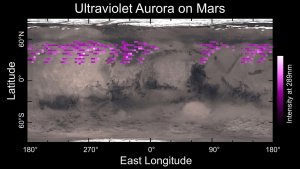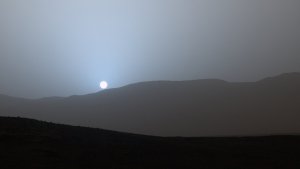| News / Space News |
Mars Panorama from Curiosity Shows Petrified Sand Dunes
NASA | SEPTEMBER 24, 2015
Some of the dark sandstone in an area being explored by NASA's Curiosity Mars rover shows texture and inclined bedding structures characteristic of deposits that formed as sand dunes, then were cemented into rock.

Large-scale crossbedding in the sandstone of this ridge on a lower slope of Mars' Mount Sharp is typical of windblown sand dunes that have petrified. ![]()
This sandstone outcrop -- part of a geological layer that Curiosity's science team calls the Stimson unit -- has a structure called crossbedding on a large scale that the team has interpreted as deposits of sand dunes formed by wind.
The Stimson unit overlies a layer of mudstone that was deposited in a lake environment. Curiosity has been examining successively higher and younger layers of Mount Sharp, starting with the mudstone at the mountain's base, for evidence about changes in the area's ancient environment.
Researchers plan to use the rover to collect and analyze a drilled sample of Stimson unit sandstone this month.
YOU MAY ALSO LIKE





